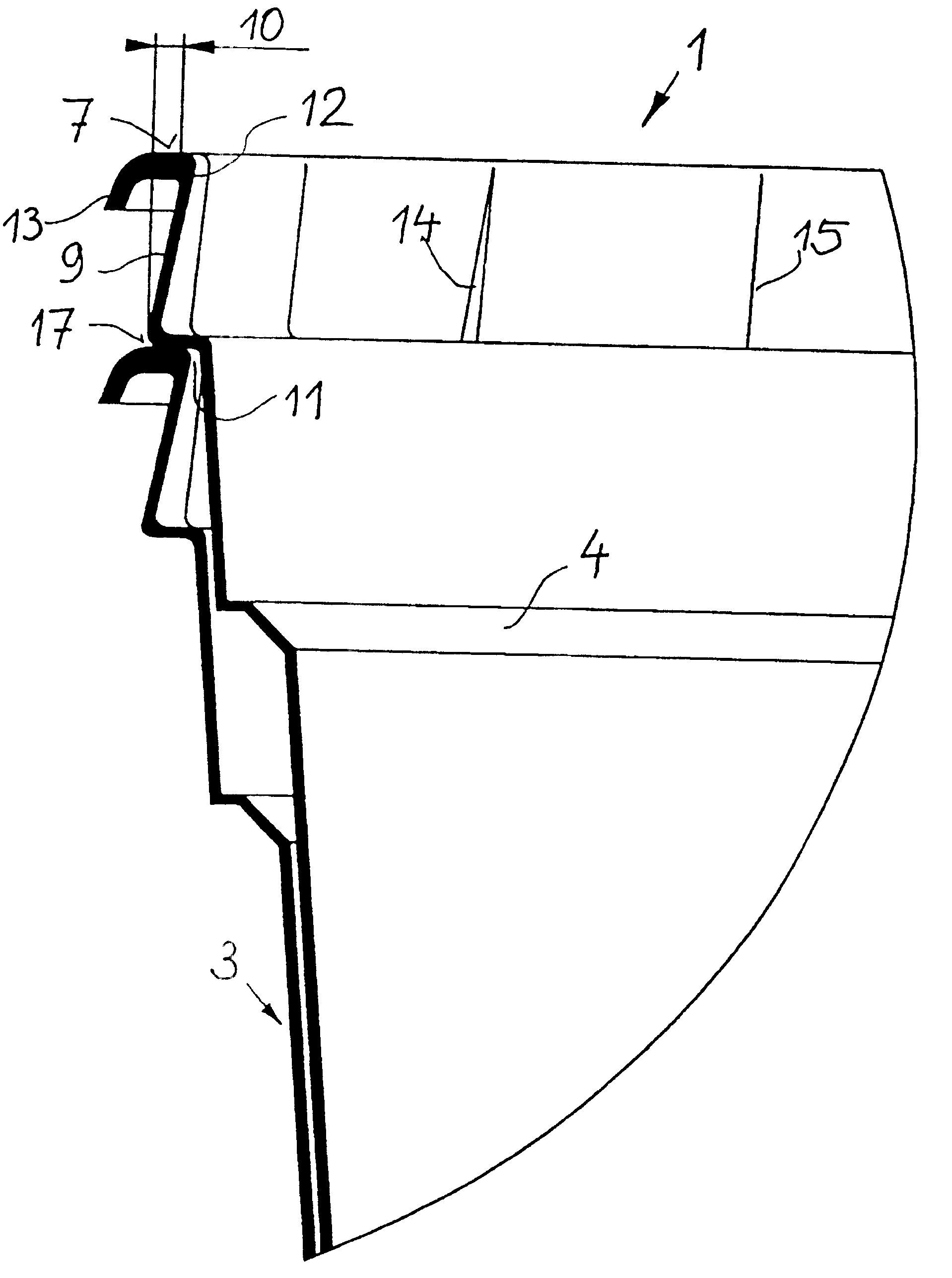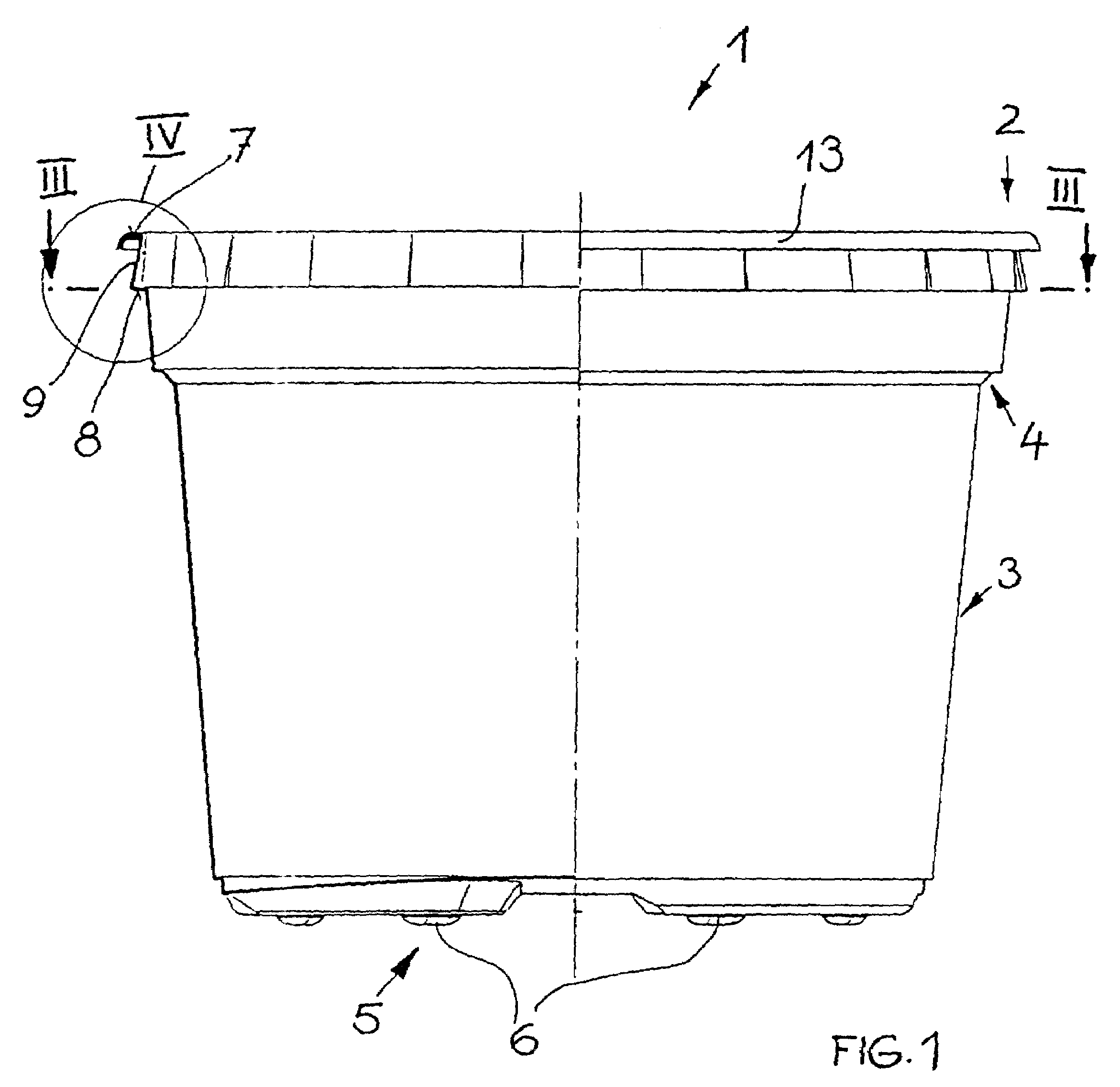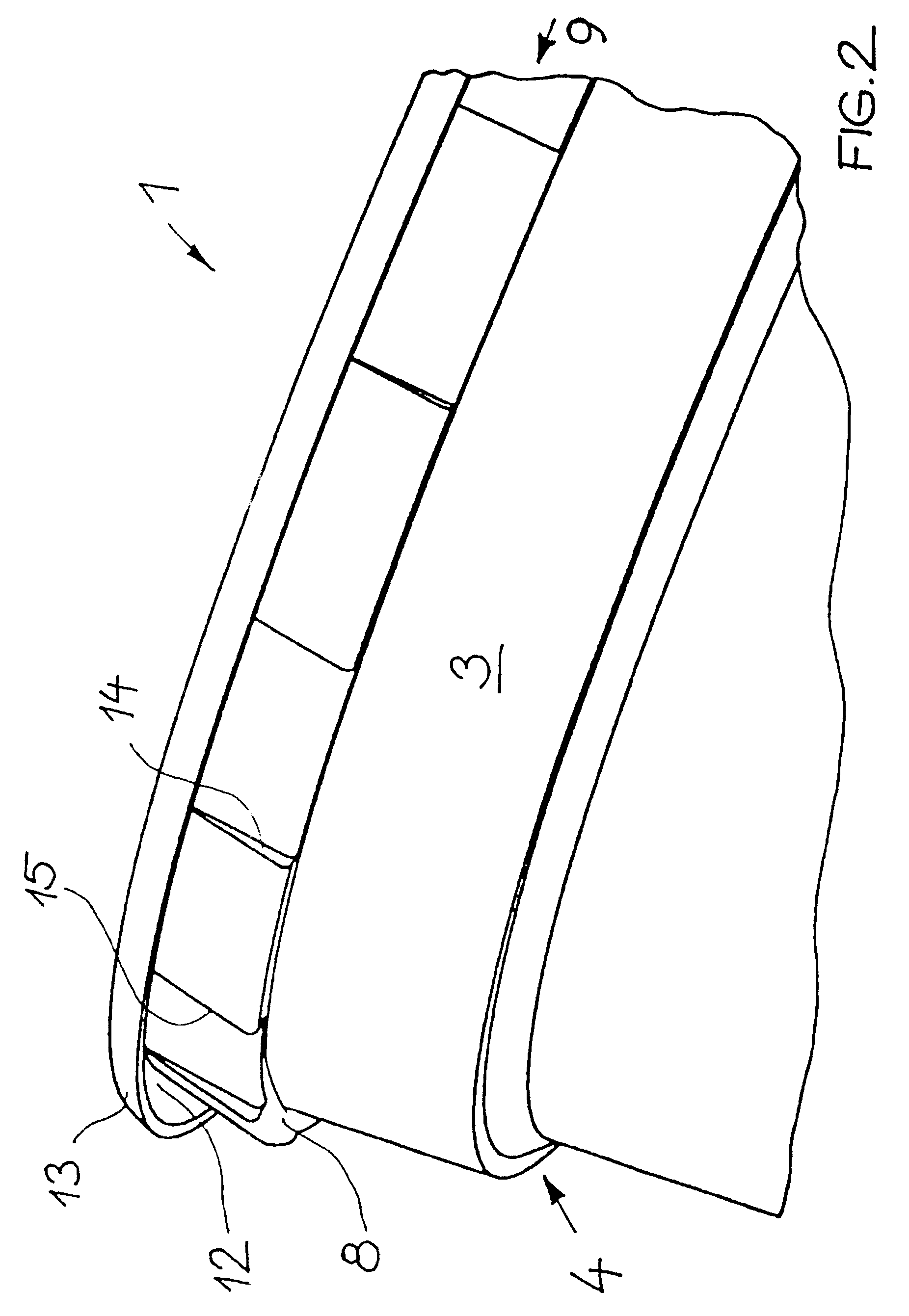Plant pot made from deep-drawn plastic
a deep-drawn, plastic technology, applied in the field of plant pots, can solve the problems of two matching ledges, presenting an undercut, and being difficult to realiz
- Summary
- Abstract
- Description
- Claims
- Application Information
AI Technical Summary
Benefits of technology
Problems solved by technology
Method used
Image
Examples
Embodiment Construction
[0018]The plastic container in the form of a plant pot 1 illustrated in FIG. 1 is a deep-drawn plastic part produced from a flat sheet or film and stamped. As a result of the shaping process, it has accordingly a pot shape with a simple continuous and unbranched wall comprising a generally conical pot wall 3, a bottom 5, and, at the top, a rim area 2. The pot wall 3 has an incorporated step 4 for reinforcement purposes; for reinforcement purposes and for effecting drainage of the pot, the bottom 5 is provided with a profiling which is not illustrated in detail. The bottom 5 has cup-shaped legs 6 for spacing it from a surface onto which it is placed. Moreover, the plant pot 1 is provided in the bottom area with holes (not illustrated) for watering and drainage purposes. The plant pot 1 shaped accordingly has a generally downwardly tapering shape, which goes hand in hand with the requirements for ease of removal from the hollow mold, on whose inner side the formed pot rests, after dee...
PUM
 Login to View More
Login to View More Abstract
Description
Claims
Application Information
 Login to View More
Login to View More - R&D
- Intellectual Property
- Life Sciences
- Materials
- Tech Scout
- Unparalleled Data Quality
- Higher Quality Content
- 60% Fewer Hallucinations
Browse by: Latest US Patents, China's latest patents, Technical Efficacy Thesaurus, Application Domain, Technology Topic, Popular Technical Reports.
© 2025 PatSnap. All rights reserved.Legal|Privacy policy|Modern Slavery Act Transparency Statement|Sitemap|About US| Contact US: help@patsnap.com



